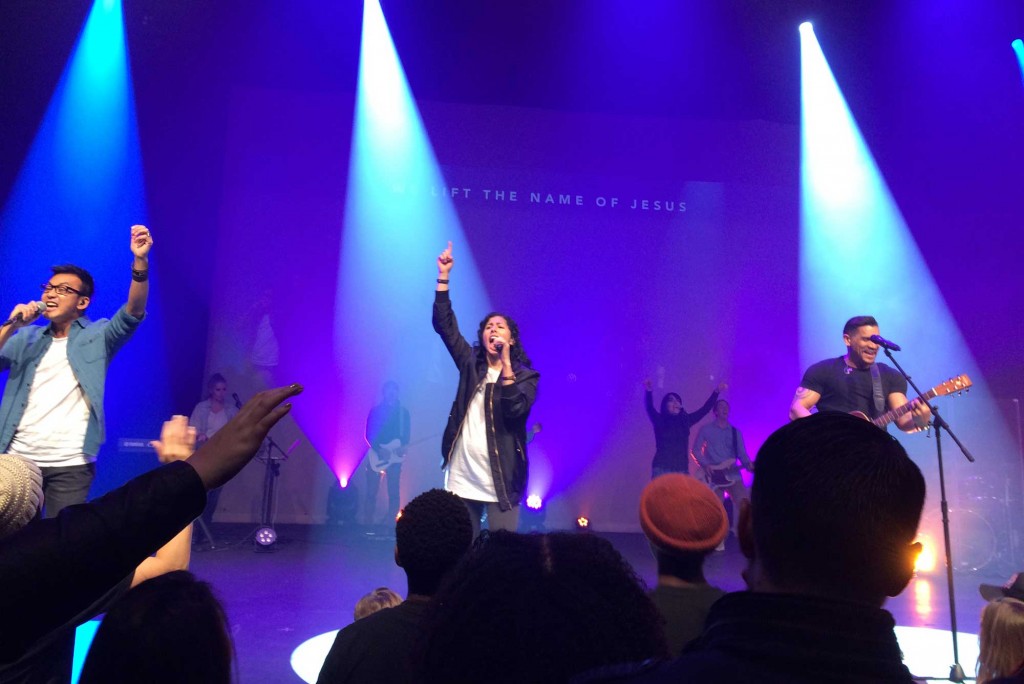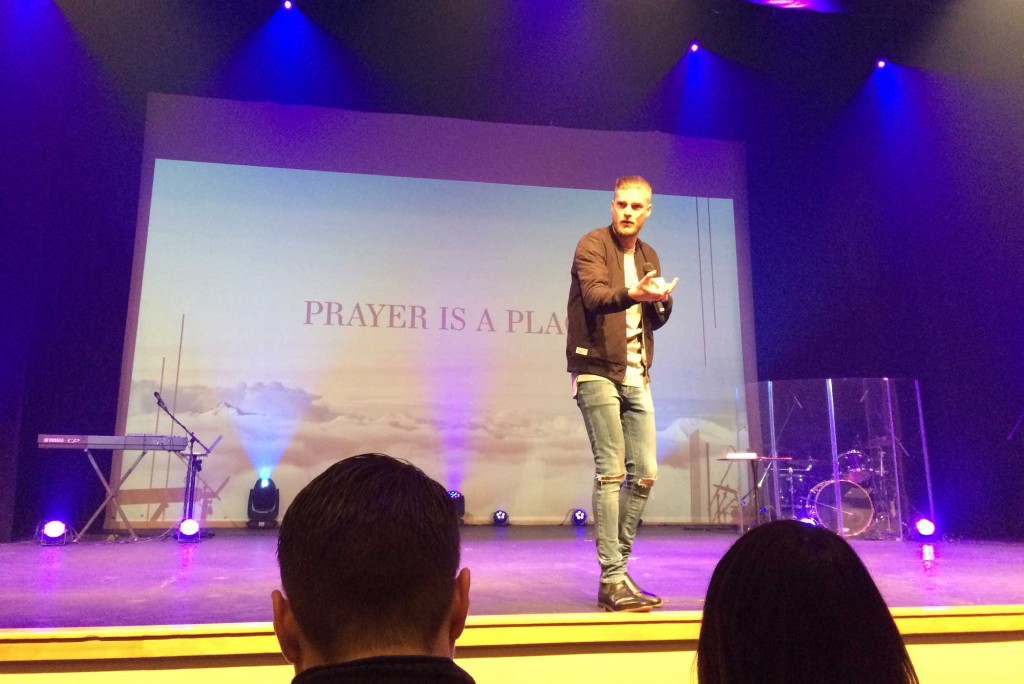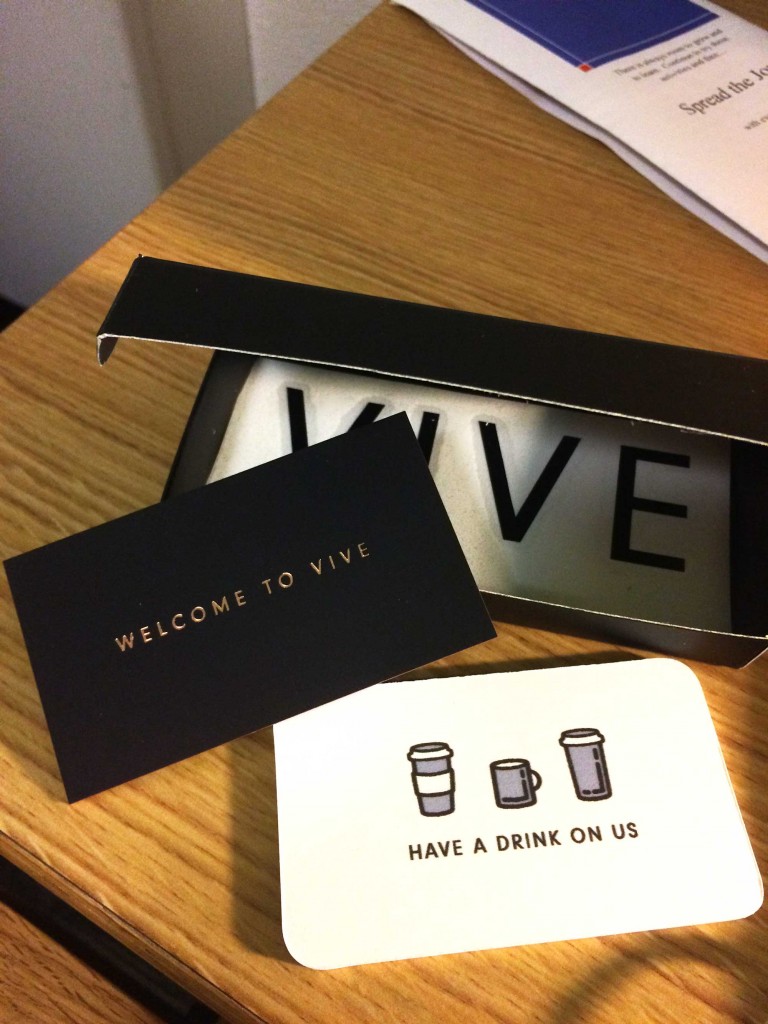The room went pitch black. On a screen behind the stage, numbers appeared, and the whole crowd around me began counting down in unison.
When they reached zero, colored lights illuminated the stage and music swelled. On stage, musicians in their twenties with tattoos wore ripped denim and sang over pounding drums and electric guitar. Spotlights flashed and I squinted as they swept past my eyes.

Church was beginning at Vive Palo Alto.
Much of the congregation moved to stand between the first row and the stage, raising their arms and dancing along. If not for the occasional mention of Jesus in the lyrics, I’d think I was at Lollapalooza.
It was my first time visiting the church, and I remained sitting in the second row. I shifted in my seat and adjusted my skirt. Getting dressed that morning, I’d asked my roommate if she thought the tights I had on were OK. My skirt came to my knee, but the stockings were sheer. You could see the freckles on my right knee through them.
We discussed it for a few minutes. She is from Texas and I was raised Roman Catholic. I ended up opening a new package of opaque tights.
After the music, the guest pastor speaking that day walked out on stage, wearing denim skinny jeans with holes at the knees, a bomber jacket and leather boots. His hair was styled in a trendy, shaved-on-the-sides way, and when he raised the microphone to begin speaking, I noticed he had two small tattoos on his right hand.
I decided either pair of tights would have been OK.
This scene may not seem like your typical church service, but then again, Vive is not your typical church. A few years ago, they ran a Billboard on Highway 101 that read: “Not Religious? Neither Are We.” Michelle Stewart, a recently ordained pastor at Vive Palo Alto, first attended a service at Vive after seeing the billboard. For her, the slogan means that the church focuses on building relationships with God and among people, rather than traditions and rules.

Such a slogan is well suited for a church in famously secular Silicon Valley. When Vive’s founders, Adam and Keira Smallcombe, first visited, a fellow patron at a Palo Alto Starbucks told them a church would never take off in the town. How could it, when one poll found that only about five percent of Valley residents attended church, in stark contrast to many other areas of the U.S.?
In fact, it was this very resistance that led Vive’s founders to start a church here.
At first, it seemed like their Starbucks companion might be right. When the Smallcombes arrived four years ago, the fledgling church consisted of the couple, their three daughters and two people they met on Twitter. But Adam figured that seven people was better than none.
Today, the church has 2,000 registered members and approximately 1,000 people attending services every Sunday at locations in San Francisco, San Jose and Palo Alto.
So what made this church take off against the odds?
Adam Smallcombe told me that although the Bay Area had long been considered a “graveyard” for churches, he actually thought the message of Vive fit naturally with the culture of the area. He pointed out the level of optimism in Silicon Valley, especially when it comes to technology, and how people are willing to invest billions of dollars in an idea that might work. He believed that he could leverage that optimism and drive, in order to bring people to faith.

(Kiley Roache/Peninsula Press)
Vive draws on the style and language of the tech industry to highlight this connection between commercial and spiritual optimism. During services, in-person sermons are combined with multimedia presentations and Vive News video shorts. Members of the congregation are invited to read along in their Bibles or on their Bible apps, and during collections, can donate to the church online or via text. And when new members of the church visit, they receive a small, sleek box of information, with a minimalistic, monochromatic design familiar to anyone with an Apple product. Even the sermons themselves echo the familiar vocabulary of startups — a few weeks ago, Smallcombe spoke of “disrupting” the status quo of religion in order to “activate” the spirit during his sermon.
But this explanation only tells part of the story. The Smallcombes, along with recently ordained pastors Luke and Michelle Stewart, credit the success of the church to Vive’s focus on relationship, something they find people in the Valley crave.
“In Silicon Valley there’s a lot of connection digitally. But a lot of people that I speak with are still longing for relationship with individuals and of course, God,” Luke told me. “They want that something bigger than themselves.”
Michelle added that people in the area feel enormous pressure to perform and to produce high-quality output. People, she said, are not used to being appreciated for who they are, and not just what they do.
As I watched the sermon during my third visit to Vive, a young girl wearing a flat brim hat pulled out her cell phone, opening Snapchat. With a polished nail she clicked a button, turning the camera from the “selfie” mode to instead face outward to the stage in front of her. She filmed a ten-second portion of the sermon, which was about courage in the face of pain and adversity, and added it to her feed.
It’s a small action, but a sign that the effort to carve out faith in the land of startups and social media just might be working.
